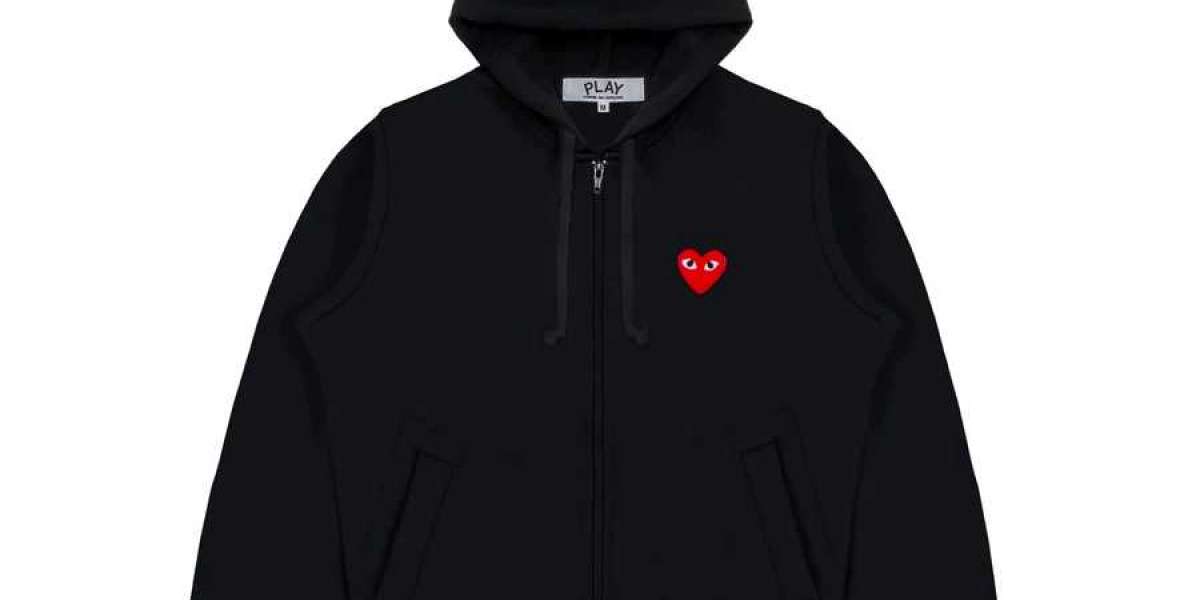Few names in the fashion world carry the mystique, reverence, and edge that Comme Des Garçons does. Founded in Tokyo in 1969 by Rei Kawakubo, the brand has transcended traditional boundaries, redefining what fashion can mean on the runway, in the streets, and on your sneakers. For decades, Comme Des Garçons (often abbreviated as CDG) has remained at the bleeding edge of creativity—sometimes confusing, always compelling.
In a world that often chases trends, Comme Des Garçons creates them—or more accurately, ignores them entirely. And yet, from high fashion to hype culture, CDG has left its unmistakable fingerprint everywhere.
The Origins of Comme Des Garçons
Rei Kawakubo wasn’t a trained fashion designer. With a background in art and literature, her entry into fashion was unconventional, yet this outsider perspective became the very foundation of her success. In 1973, she officially established the Comme Des Garçons label, meaning "like the boys" in French—a name that hinted at the androgynous, deconstructed silhouettes she would become known for.
Kawakubo's early work challenged Western fashion norms, with her signature black-heavy collections, asymmetrical designs, and unconventional fabrics. These weren’t just clothes; they were philosophical statements, asking audiences to reconsider the meaning of beauty and the structure of garments themselves.
The Paris Debut That Shook the Industry
In 1981, Comme Des Garçons debuted in Paris—and the fashion world wasn’t ready. The Fall/Winter 1982 collection, dubbed “Hiroshima Chic” by Western critics, shocked audiences. The collection was primarily black, with torn and unfinished edges, oversized silhouettes, and a clear rejection of mainstream aesthetics. Critics were divided. Some called it revolutionary; others called it apocalyptic.
But what Kawakubo had done was far more significant than a single collection. She had opened the door for a new conversation in fashion—one where clothing could carry weighty, conceptual meaning.
Today, that rebellious energy remains intact. CDG Hoodie collections continue to experiment with form, challenging what a body should look like under clothing and what fashion should aim to express.
Streetwear Meets the Runway: CDG’s Global Influence
While Comme Des Garçons is widely regarded as high fashion, it has also managed to earn an iconic status in streetwear and sneaker culture—two worlds that rarely embraced avant-garde fashion until recently.
This cross-cultural influence is largely thanks to Kawakubo’s business acumen and the brand’s expansion into sub-labels and collaborations. One of the most successful is Comme Des Garçons PLAY, launched in 2002. PLAY features simpler, more casual designs often adorned with the now-iconic bug-eyed heart logo designed by Polish artist Filip Pagowski. The line is intentionally more accessible—both in price and in aesthetic—and has become a staple in global streetwear.
Even if someone isn’t familiar with Kawakubo’s more abstract collections, chances are they recognize the CDG heart logo—a perfect example of how the brand exists in both high art and mass appeal simultaneously.
The Sneaker Collaborations That Defined a Generation
No conversation about CDG Shirt is complete without mentioning its game-changing sneaker collaborations. Perhaps none are more iconic than the ongoing partnership with Converse, particularly the Comme Des Garçons PLAY x Converse Chuck Taylor 70.
These sneakers, often featuring the playful heart motif, have become a mainstay in sneaker rotations across the world. They’ve crossed boundaries between fashion and streetwear, adopted by influencers, designers, and everyday wearers alike.
Beyond Converse, CDG has collaborated with a variety of brands that include Nike, Jordan, Vans, New Balance, and even Salomon, bringing high-concept aesthetics to the sneaker world. One standout is the Comme Des Garçons x Nike Air Max 95, a minimalist, all-black shoe that merges performance with art.
These collaborations aren’t just limited-edition cash grabs—they’re a reflection of Kawakubo’s belief in blending functionality with conceptual design, and they often sell out within minutes of release.
Breaking Down the CDG Universe: Sub-Labels and Retail
Comme Des Garçons operates not as a single brand, but a multiverse of sub-labels, each with its own creative direction. These include:
Comme Des Garçons Homme Plus – Known for its high fashion menswear with gender-fluid and conceptual design.
Comme Des Garçons Shirt – A more youthful, street-ready take on modern menswear.
Comme Des Garçons Noir, Tricot, and Junya Watanabe, among others, each offering a unique take within the larger CDG universe.
Junya Watanabe, a protégé of Kawakubo, has built a reputation for his technical brilliance and collaborations with Levi’s, Carhartt, and The North Face. Watanabe’s work is an extension of the CDG ethos—forward-thinking, boundary-breaking, and unapologetically bold.
In retail, the Dover Street Market concept, launched by CDG in London, has redefined fashion retail spaces. These multi-brand boutiques operate more like curated art galleries than traditional stores. Each location is a cultural hub that blends streetwear, luxury, and art installations under one roof.
Why Comme Des Garçons Continues to Matter
Fashion is fickle. Trends come and go, and many brands peak only to fade away with time. But Comme Des Garçons continues to evolve because it refuses to conform. The brand does not follow algorithms, influencers, or seasonal hashtags. Instead, it stays grounded in Kawakubo’s original mission: to question, to challenge, and to create from a place of artistic honesty.
In doing so, CDG has become more than a fashion label—it’s a cultural institution. It has inspired countless designers, influenced runway shows globally, and paved the way for more experimental and inclusive visions of fashion.
In a landscape that rewards repetition, CDG stands as a defiant reminder that originality still matters.
How to Style Comme Des Garçons
From a practical perspective, incorporating CDG into your wardrobe can range from bold statement pieces to subtle logo elements. The CDG PLAY sneakers are arguably the easiest entry point. They pair effortlessly with denim, cargo pants, or even tailored trousers. Throw in a graphic tee or a PLAY hoodie, and you’re blending comfort with culture.
For more daring outfits, look to CDG Homme Plus blazers with deconstructed shapes or oversized silhouettes from mainline collections. These pieces require confidence and creativity, but when styled well, they transform the wearer into a walking conversation.
The beauty of CDG is its versatility—you can keep it simple or go full avant-garde, and both expressions remain authentic to the brand’s identity.
The Future of CDG: What Lies Ahead?
Rei Kawakubo is now in her 80s, but she shows no signs of slowing down. As of 2025, she remains at the helm of Comme Des Garçons, still designing collections that leave audiences stunned, confused, and inspired.
The question of succession looms in the background, but the legacy she’s built—through her own work and through designers like Junya Watanabe and Kei Ninomiya—ensures the spirit of CDG will continue long after her.
As sustainability, technology, and identity politics reshape the fashion landscape, Comme Des Garçons is well-positioned to continue challenging the status quo. It is one of the few brands that has always treated fashion as a medium for ideas, not just aesthetics.
Conclusion
Comme Des Garçons is not just a fashion brand—it is a movement. It’s an invitation to think differently about what clothing can be, about how we define style, and about the role of fashion in culture. Whether you're drawn to its high-concept runway shows or simply rock the PLAY x Converse sneakers, you're participating in a legacy that values boldness, artistry, and authenticity above all.







